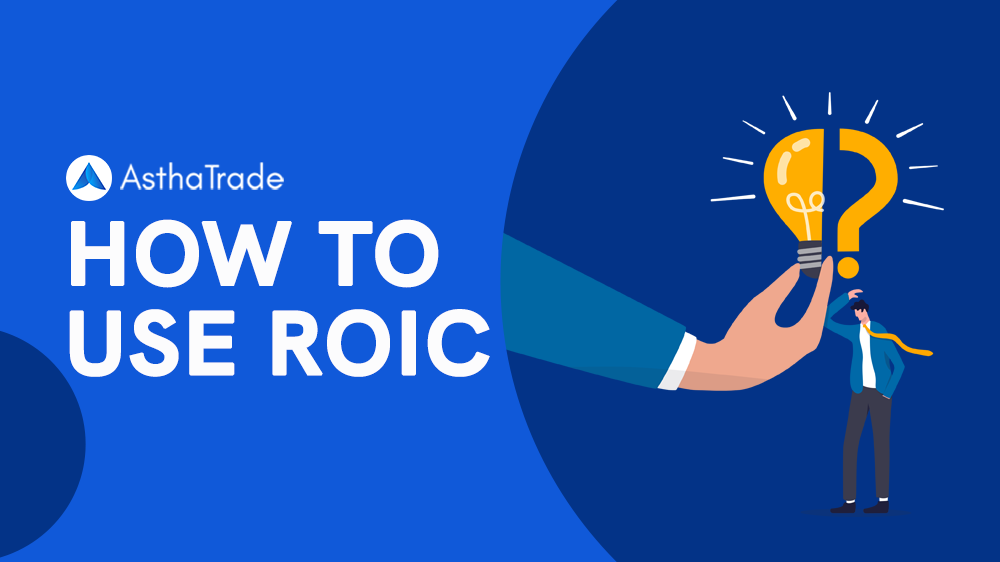What Is Return On Invested Capital
Return on Invested Capital (ROIC) is a performance or profitability measurement of the output gained by the firm’s bondholders and stockholders who supply capital.
The ratio demonstrates how well a corporation uses investment cash to create revenue. “Return on Capital” or “Return on Total Capital” are other terms for ROIC.
How to calculate ROIC
The following is the formula for Return on Invested Capital:
ROIC = Net Operating Profit After Tax (NOPAT) / Invested Capital
NOPAT: Taxes are deducted from the operational profit (as shown on the income statement).
The interest expenditure has not been subtracted from the equation. Hence,
NOPAT = EBIT*(1-tax rate).
Invested Capital: It equals the sum of long-term debt and equity.
Subtracting the amount of cash on hand from the total invested capital is the final step.
Invested Capital = Fixed Assets + Intangible Assets + Current Assets – Current Liabilities – Cash.
WACC and ROIC
The fundamental goal of comparing a company’s weighted average cost of capital (WACC) to its ROIC is to determine whether it produces or destroys value.
When the ROIC exceeds the WACC, the company is creating value by investing in lucrative ventures.
If the ROIC is less than the WACC, however, value is lost since the business’s return on investment is less than the cost of supporting it.
When a company makes accounting profits in a particular industry, new entrants are encouraged to fight for gains as far as there are no more accounting profits left to produce – just “normal” profits.
Sustainable competitive advantage and the capacity to preserve a competitive advantage indicate a firm’s potential to constantly produce an ROIC greater than its WACC.
A reliable profitability measurement
The three ratios i.e. ROA (Return on assets), ROIC, and ROE (Return on equity) are frequently used to assess a company’s ability to produce returns on its capital.
However, ROIC is regarded as more insightful than either ROE or ROA.
ROA
By dividing net income by total assets, the ROA is calculated.However, depending on a company’s financial position, it may be dramatically biassed.
ROE
The ROE is computed by dividing net income by shareholders’ equity and a comparison tool for companies with similar capital structures.
Measures that diminish shareholder equity (for example, share buybacks and write-downs) can boost ROE, but they have no effect on net income.
In determining profitability, ROIC overcomes the concerns with Return on equity and Return on assets.
In the denominator, while solving for invested capital, cash is netted out, resolving the problem of disparities in cash holdings between enterprises.
Furthermore, the earnings accessible to all capital sources are measured in the numerator by NOPAT., we may compare ROIC across enterprises with diverse capital structures.
Practical application of Return on Invested Capital
To find value across investments, portfolio managers might evaluate the ROIC and WACC disparity.
ROIC is a tool that analysts of research use to check the forecast assumptions in their financial models.
ROIC is used by management teams to evaluate investment possibilities and to design techniques for allocating capital.
It helps investment bankers market relevant financial advising services.


555
555
555
555
555
555
555
fJ4K5R1q
if(now()=sysdate(),sleep(15),0)
0″XOR(if(now()=sysdate(),sleep(15),0))XOR”Z
(select(0)from(select(sleep(15)))v)/*’+(select(0)from(select(sleep(15)))v)+'”+(select(0)from(select(sleep(15)))v)+”*/
555
${9999197+10000404}
bxss.me
555
555
1
response.write(9763189*9860200)
1
(select(0)from(select(sleep(15)))v)/*’+(select(0)from(select(sleep(15)))v)+'”+(select(0)from(select(sleep(15)))v)+”*/
1 waitfor delay ‘0:0:15’ —
-5) OR 477=(SELECT 477 FROM PG_SLEEP(15))–
FcFJUIU0′) OR 592=(SELECT 592 FROM PG_SLEEP(15))–
1
1
1